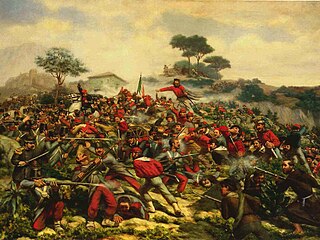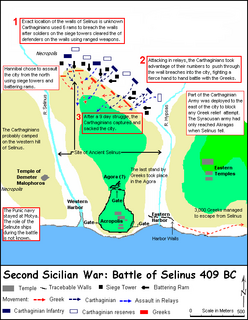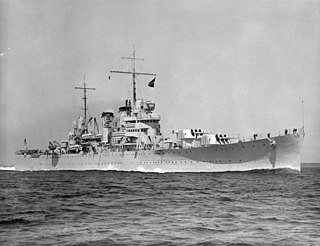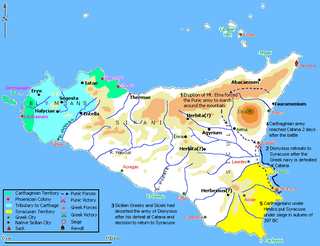 W
WThe Battle of Agrigentum was the first pitched battle of the First Punic War and the first large-scale military confrontation between Carthage and the Roman Republic. The battle was fought after a long siege which started in 262 BC and resulted both in a Roman victory and the beginning of Roman control of Sicily.
 W
WThe Battle of Calatafimi was fought on the 15 May 1860 between Giuseppe Garibaldi's volunteers and the troops of the Kingdom of the Two Sicilies at Calatafimi, Sicily, as part of the Expedition of the Thousand. The battle was the first of Garibaldi's victory during his invasion of Sicily in 1860 and saw his 'Thousand' defeat a larger Neapolitan army sent from Palermo to block the roads to the Sicilian capital.
 W
WThe Battle of Lilybaeum was the first clash between the navies of Carthage and Rome in 218 BC during the Second Punic War. The Carthaginians had sent 35 quinqueremes to raid Sicily, starting with Lilybaeum. The Romans, warned by Hiero of Syracuse of the coming raid, had time to intercept the Carthaginian contingent with a fleet of 20 quinqueremes and managed to capture several Carthaginian ships.
 W
WThe Battle of Panormus was fought in Sicily in 250 BC during the First Punic War between a Roman army led by Lucius Caecilius Metellus and a Carthaginian force led by Hasdrubal. The Roman force of two legions defending the city of Panormus defeated the much larger Carthaginian army of 30,000 men and between 60 and 142 war elephants.
 W
WThe Battle of Selinus, which took place early in 409 BC, is the opening battle of the so-called Second Sicilian War. The ten-day-long siege and battle was fought in Sicily between the Carthaginian forces under Hannibal Mago and the Dorian Greeks of Selinus. The city of Selinus had defeated the Elymian city of Segesta in 415, an event that led to the Athenian invasion of Sicily in 415 and ended in the defeat of Athenian forces in 413. When Selinus again worsted Segesta in 411, Carthage, responding to the appeal of Segesta, had besieged and sacked Selinus after the Carthaginian offer of negotiations had been refused by the Greeks. This was the first step towards Hannibal's campaign to avenge the Carthaginian defeat at the first battle of Himera in 480. The city of Selinus was later rebuilt, but never regained her former status.
 W
WThe amphibious Battle of Gela was the opening engagement of the American portion of the Allied Invasion of Sicily during World War Two. United States Navy ships landed United States Army troops along the eastern end of the south coast of Sicily; and withstood attacks by Luftwaffe and Regia Aeronautica aircraft while defending the beachhead against German tanks and Italian tanks of the Livorno Division until the Army captured the Ponte Olivo Airfield for use by United States Army Air Forces planes. The battle convinced United States Army officers of the value of naval artillery support, and revealed problems coordinating air support from autonomous air forces during amphibious operations.
 W
WThe Siege of Syracuse by the Roman Republic took place in 213–212 BC, at the end of which the Hellenistic city of Syracuse, located on the east coast of Sicily, fell. The Romans stormed the city after a protracted siege giving them control of the entire island of Sicily. During the siege, the city was protected by weapons developed by Archimedes. Archimedes, the great inventor and polymath, was slain at the conclusion of the siege by a Roman soldier, in contravention of the Roman proconsul Marcellus' instructions to spare his life.
 W
WThe Siege of Syracuse in 397 BC was the first of four unsuccessful sieges Carthaginian forces would undertake against Syracuse from 397 to 278 BC. In retaliation to the Siege of Motya by Dionysius of Syracuse, Himilco of the Magonid family of Carthage led a substantial force to Sicily. After retaking Motya and founding Lilybaeum, Himilco sacked Messana, then laid siege to Syracuse in the autumn of 397 BC after the Greek navy was crushed at Catana.